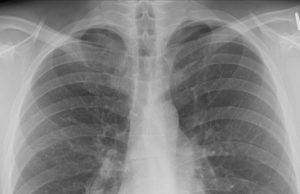A growing body of evidence reveals the economic toll smoking takes on Australia’s most vulnerable communities. Public health experts argue that price-based strategies alone won’t bring smoking rates below the national 2030 target. With illicit tobacco trade surging and access to safer nicotine products tightly restricted, critics are calling for a more balanced approach to reduce harm and support quitting.
Professor Coral Gartner from UQ’s School of Public Health emphasized that standard tools like tax hikes are not enough to drive smoking rates below the national 2030 target of 5%. Her research, which examined household tobacco spending from 2006 to 2022, found that while fewer households overall are buying tobacco, those that do are now spending more—up to $4,931.70 annually per household.
She stressed that seasoned smokers often cut back on essential expenses such as food, healthcare, and education, in order to keep up with the rising cigarette prices. To address this, Professor Gartner advocates for additional strategies, including reducing the number of retail outlets selling tobacco, regulating tobacco like pharmaceutical products, and expanding access to free cessation therapies.
Notably however, she fails to consider or mention the use of safer nicotine alternatives such as vapes as smoking cessation aids. This is unfortunate given that data have shown that these products acually yeild the best results. Coincidently infact, a recent article by Emeritus Professor of History and Politics at Griffith University Ross Fitzgerald, which also discussed the higher smoking rates among lower-income groups, made this distinction.
Disproportionate impact on lower-income populations
Professor Fitzgerald explained that low-income smokers consume more cigarettes daily compared to their wealthier counterparts. This disparity, he added, contributes significantly to health issues, including elevated lung cancer rates, particularly in areas with high concentrations of Indigenous and economically disadvantaged populations. Smoking-related illnesses account for a substantial portion of the life expectancy gap between Australia’s richest and poorest citizens.
The Professor discussed the fact that Australia’s tobacco taxes have surged by 282%, making cigarettes among the most expensive globally. However rather than deterring smokers, this has just led to a thriving tobacco black market. A legal pack of 20 cigarettes now costs approximately $40, while black-market alternatives are available for around $15. This price disparity has naturally led many smokers, especially those with limited financial means, to seek out the cheaper, unregulated varieties.
Economic strain and the rise of illicit tobacco trade
Meanwhile, the burgeoning illicit tobacco market has not only eroded legal sales but also significantly reduced government tax revenues, contributing to a notable budget deficit Moreover, the illegal tobacco trade has also been linked to increasing criminal activities, including violent confrontations and arson attacks on retail outlets.
Fitzgerald went on to highlight that while Australia maintains strict regulations on vaping and alternative nicotine products, other countries like New Zealand have adopted more lenient policies, resulting in a more rapid decline in smoking rates. To add insult to injury, another recent study confirmed that Australia’s prescription-only vape regulations are an epic failure.
Local pharmacies refuse to cooperate
Consisting of a survey of 332 pharmacies, the study found that approximately 75% of them do not stock these products, and many are hesitant to order them upon request. This reluctance stems from concerns over administrative burdens, potential reputational risks, and a general lack of support for the policy. Only 26% of surveyed pharmacies currently offer any vaping products, and those that do stock vapes, have a limited selection, with just 40 product listings covering a few brands.
Australia’s restrictive approach to nicotine vaping has not achieved its intended public health outcomes. The limited participation of pharmacies and the rise of black-market alternatives suggest a need for policy reassessment. Adopting a more balanced strategy that ensures safe, regulated access while minimizing illicit trade may better serve public health goals. To this effect, experts in the field have been suggesting that licensed vape retailers should be allowed to sell nicotine vaping products to adults, with strict quality control measures and age verification processes set across all sales channels to prevent underage sales.
The way forward
In light of this mounting evidence, it is clear that Australia’s current approach to tobacco control—relying heavily on taxation and restrictive vape policies—is failing to meet the needs of its most vulnerable populations. While price hikes have prompted many to quit, they have also intensified financial strain for those unable to stop, especially in lower-income communities. The growing black market and poor access to regulated, safer alternatives like vaping products are undermining public health objectives. A more compassionate, evidence-based strategy is urgently needed—one that supports harm reduction, empowers consumers, and ensures all Australians can access effective tools to quit smoking safely.








